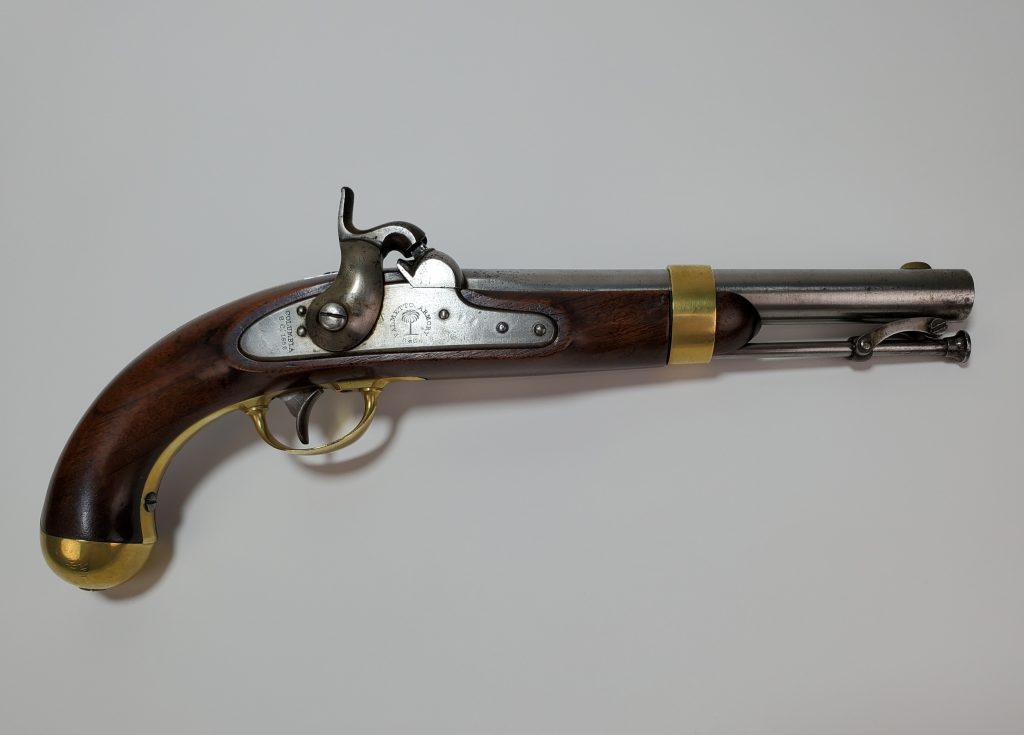Like many collecting fields, there are certain genres that people collect. One of them that has always interested me is the late 18th and early 19th century evolution of martial arms technology. While the basic functionality of the gun was the same, certain things did evolve over time.
Last week I picked up the collection of a gentleman who collected U.S. military pistols from 1797 to 1842, the advent of the first mass produced gun as well as the first with a percussion ignition system. Sitting down with all these pieces of history and cataloging them has been fascinating. While I have seen many of these guns, never before have I had the chance to sit down to handle each one and study them.
Up until the U.S. Model 1842 mentioned above, each gun was hand assembled. With the 1798 Horseman’s pistol shown in the image, it had an imported lock made by Thomas Ketland & Company in England and had been imported. While gunsmiths in America could make locks and barrels, it was easier to purchase ready made parts and then assemble them into a gun. As United States arsenals began production of arms, they did make all the parts. Lock makers-built locks, stockers made stocks, and each part had assembly marks so that they could be assembled and fit together. Each gun was individually made, and the parts were not necessarily interchangeable during this period. This is why some of these arms have repairs to existing parts done during the period instead of just replacing a lock if something broke. As the early 19th century progressed certain patterns, or models as they are officially called, all look identical, however they are not all exact in specifications.

Then came the Model 1842 pistol. Springfield Armory built a handful of the pistols as models, they then made sets for tooling and inspecting the arms so that a lock from a gun made by Aston could fit on a gun made by Johnson. While a Model 1842 Pistol made by Johnson or Aston is not a really rare gun, it a technological advance in the martial arms of the period. That being said, the model or pattern guns built by Springfield Armory are exceedingly rare and command high prices when they come on the market. Another of the rare Model 1842s were built by Palmetto Arsenal in Columbia, South Carolina. They used cast-off or condemned parts from Johnson and from a distance look the same as a standard 1842, but a closer look shows a palmetto tree on the lock plate, breech of the barrel, and other details that break it out from the other less valuable examples.
While I am in the business of finding and auctioning historic arms and militaria, the history of some of these objects as well as the human stories with some of them continue to fascinate and draw my interest.




